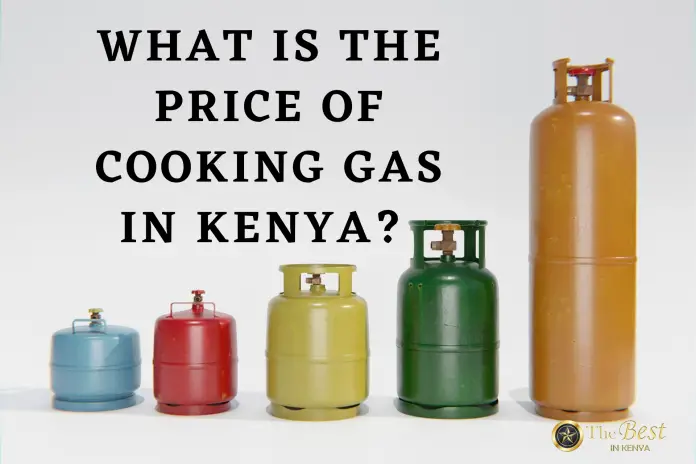Gas vending is considered one of the most profitable businesses in Kenya. However, the recent volatility in gas prices has been a challenge to many vendors.
The government introduced a value-added tax (VAT) of 16 percent on Liquefied Petroleum Gas (LPG) in July 2022. However, after a public uproar, the prices were halved to 8.0.
On average, the price of a 6KG and 13KG gas cylinder refill is Ksh. 1200 and Ksh. 2,600, respectively. The table below gives you a rough idea of the average price you may expect to pay for cooking gas, sorted by the five major cities in Kenya. Let’s dive in!
Current Gas Prices in Different Towns in Kenya
Town |
Gas Weight |
Estimated Cost |
| Nairobi |
|
|
| Mombasa |
|
|
| Kisumu |
|
|
| Nakuru |
|
|
| Eldoret |
|
|
Cooking Gas Accessories in Kenya
LPG (short for Liquid Petroleum Gas) makes cooking economical, fast, and easy. However, you must pay attention to safety details when using gas cylinders. You shouldn’t compromise on safety even if the costs are relatively higher. Ensure they’re created with utmost care and precision and follow all the prescribed quality and safety standards. Here are the essential cooking gas accessories you need to have and their prices.
| Cooking Gas Accessory | Estimate Price Range |
| Burners | Sh. 799 – Sh. 950 |
| Regulators | Sh. 500 – Sh. 1000 |
| Hose pipe | Sh. 895 – Sh. 1000 |
| Grill | Sh. 620 – Sh. 850 |
| Lantern | Sh. 2200 – Sh. 2500 |
| Cooker | Sh. 4300 – Sh. 35, 000 |
So, while we may be just about to face the worst of our economic outlook now, Kenyans can rest assured that it won’t last long. The government is rumoured to reinstate more subsidy measures on Kenya gas prices that President William Ruto scrapped 11 months ago after he termed it unsustainable.
Frequently Asked Questions
1. How Much is 1 Litre of Petrol in Kenya Today?
The maximum allowed petroleum pump prices in Nairobi is Sh. 211.64, with slight upward variations in other parts of the country.
In Mandera County, which is more than 1100 kilometres northeast of Nairobi and is on the border with Ethiopia and Somalia, a litre of petroleum will retail for Sh. 225.64. The county, which historically posts the most expensive prices, has once again registered the highest charges on fuel following the latest review.
In other counties, petrol will retail at over Sh. 221.64 are Turkana, Wajir, and Marsabit. All these counties are in Northern Kenya, many kilometres from Nairobi.
2. What is the Price of Diesel in Kenya?
The Energy and Petroleum Regulatory Authority (EPRA) has announced significant increases in the prices of Diesel by 12.52%. That’s in Nairobi, Mombasa, and Kisumu counties; Diesel will retail at Sh. 209.99, Sh. 199.54 and Sh. 210.64 per litre, respectively.
3. How Much is 1 litre of Paraffin in Kenya?
Paraffin, used by many Kenyan households, wasn’t left behind. For instance, a litre of paraffin will retail at Sh. 202.01 in Nakuru.
Bottom Line
When a pocketbook issue becomes a crisis, lawmakers face a choice: they may respond with short-sighted and sometimes even long-term harmful policies, or they may enact solutions that deliver tangible benefits to us.
The price of gas in Kenya and the entire world is volatile and will continue skyrocketing due to global supply disruptions beyond our country. The only way to fully insulate us and our economies from this volatility is to build a sustainable transportation system that doesn’t depend on oil. This includes reducing trip distance, electrifying, and creating more infrastructure supporting shared and active mobility.



























